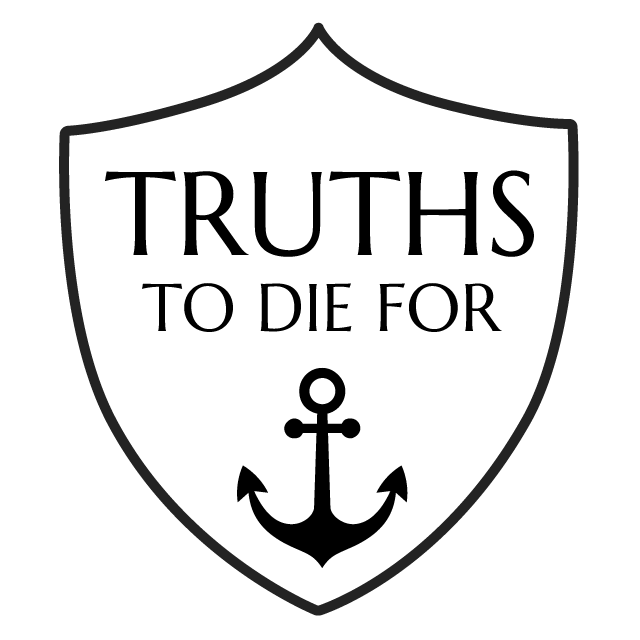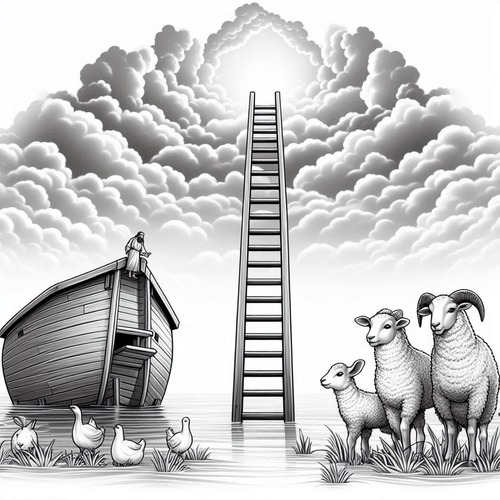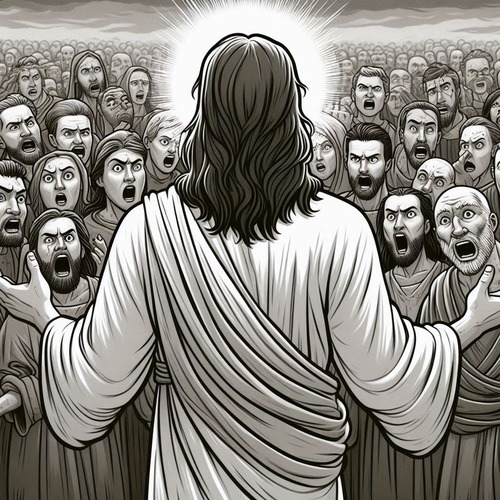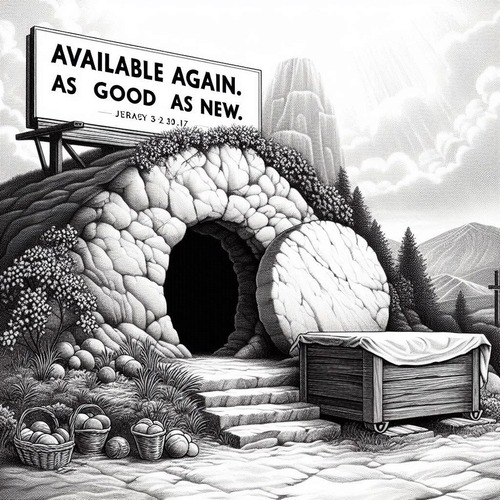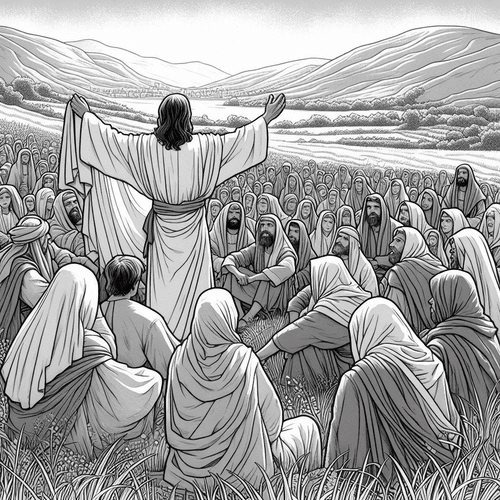Types of Christ and His Cross in the Old Testament
TYPES OF CHRIST: SHADOWS OF THE GOOD THINGS TO COME
In the ancient Hebrew scriptures, God used many ordinary things and events to hint at and symbolise the coming of Jesus Christ and His sacrifice on the cross. These symbols and symbolic events—or 'types'—pointed forward, foreshadowing the greater spiritual truths that would be realized when Christ actually arrived. The Holy Spirit carefully recorded these types of Christ and His cross in the Old Testament, as symbolic hints to help us understand and appreciate Christ's ministry. By including these symbols, the scriptures demonstrate how Jesus and His death on the cross overshadow and outshine the symbolic representations that came before him.
What are these "Types" of Christ? "Types" are people, events, or objects in the Old Testament that prefigure or symbolise greater spiritual truths that would be revealed and fulfilled in the New Testament. They are like shadows or patterns that point to the ultimate reality found in Christ. The apostle Paul refers to these as "shadows of the things to come" (Colossians 2:17).
The Holy Spirit inspired the recording of these types to progressively reveal God's redemptive plan and to prepare the way for the coming of the Messiah. They serve as object lessons that help us understand the significance of Christ's work on the cross and the superiority of the New Covenant over the Old.
Noah's Ark: The story of Noah's Ark (Genesis 6-9) is a type of salvation through Christ. Just as Noah and his family were saved from the flood by taking refuge in the ark, those who put their faith in Christ are saved from the judgment of sin by being "in Christ" (2 Corinthians 5:17). The ark was the only means of salvation from the flood, just as Christ is the only way to be saved from sin and its consequences (John 14:6, Acts 4:12).
However, while the ark provided temporary physical salvation, Christ offers eternal spiritual salvation. The ark could not remove the sin that caused the flood, but Christ's sacrifice on the cross atoned for sin once and for all (Hebrews 9:26).
Jacob's Ladder: In Genesis 28:10-22, Jacob has a dream of a ladder stretching from earth to heaven, with angels ascending and descending on it. This ladder is a type of Christ, who is the mediator between God and humanity (1 Timothy 2:5). Just as the ladder connected heaven and earth, Christ bridges the gap between God and humanity, making a way for us to have a relationship with God (John 1:51).
However, while the ladder was merely a symbolic representation, Christ is the literal embodiment of the way to God. He is not just a temporary means of access but the eternal, living Way (John 14:6).
The Passover Lamb: In Exodus 12, God instructs the Israelites to sacrifice a lamb and apply its blood to the doorposts of their homes, so that the angel of death would pass over them when striking down the firstborn in Egypt. This Passover lamb is a type of Christ, the Lamb of God, whose blood saves believers from the judgment of sin and death (1 Corinthians 5:7, 1 Peter 1:19).
Those who trusted in the Passover lamb received temporary reprieve from the guilt of sin, but no reprieve from the power of sin itself. They had no indwelling presence of the Holy Spirit, no eternal life, and no reconciliation with the Father. The Passover only provided temporary, physical deliverance.
While the Passover lamb had to be sacrificed annually, Christ's sacrifice on the cross was a once-for-all offering that permanently delivers believers from sin and death (Hebrews 9:12, 10:10). His blood doesn't merely cover over sin, but cleanses us from all unrighteousness (1 John 1:7). In Christ, we are not only forgiven but also reborn with new spiritual life, indwelt by the Holy Spirit, adopted as God's children, and reconciled into an eternal relationship with the Father (2 Corinthians 5:17-21).
The Passover lamb could only point towards the true Lamb of God who would take away the sin of the world through His perfect, unrepeatable sacrifice (John 1:29). While the lamb was vital for its time, it was still an inadequate, temporary provision compared to the eternal realities purchased for believers through the cross of Christ.
The Pillar of Cloud and Fire: In Exodus 13:21-22, God leads the Israelites through the wilderness by a pillar of cloud by day and a pillar of fire by night. These pillars are types of Christ, who is the Light of the World (John 8:12) and the One who guides and protects His people (John 10:27-28).
However, while the pillars were temporary and physical manifestations, Christ is Immanuel, the eternal and spiritual reality who not only guides but also gives eternal life to those who follow Him (John 10:28).
The Rock That Moses Struck: In Exodus 17:1-7, Moses strikes a rock in the wilderness, and water gushes out to quench the thirst of the Israelites. This rock is a type of Christ, who was struck and pierced on the cross so that the living water of salvation might flow to all who believe (1 Corinthians 10:4, John 4:10-14, 7:37-38).
However, while the rock provided temporary physical water, Christ offers the eternal spiritual water that satisfies the deepest thirst of the soul (John 4:14, 7:37-38).
The Tabernacle: The tabernacle, as described in Exodus 25-27, is a type of Christ, who is the true dwelling place of God among His people (John 1:14, Colossians 2:9). The various elements of the tabernacle, such as the altar, the bread of the Presence, and the veil, all point to different aspects of Christ's work and ministry.
However, while the tabernacle was a temporary and physical structure, Christ is the eternal and spiritual reality, the true temple where God and humanity can meet (John 2:19-21, Revelation 21:22).
Rahab's Red Cord: In Joshua 2, Rahab the harlot ties a scarlet cord in her window, which serves as a sign to the Israelite spies to spare her and her household when Jericho is conquered. This scarlet cord is a type of the blood of Christ, which saves those who put their faith in Him from the judgment of sin (Romans 3:25, Ephesians 1:7).
However, while the scarlet cord was a temporary and physical symbol, the blood of Christ is the eternal and spiritual reality that cleanses us from all sin (1 John 1:7, Revelation 1:5).
The Bronze Serpent: In Numbers 21:4-9, God instructs Moses to make a bronze serpent and raise it on a pole, so that anyone bitten by the venomous snakes in the wilderness could look at it and live. This bronze serpent is a type of Christ, who was lifted up on the cross so that whoever looks to Him in faith might be saved from the venom of sin and have eternal life (John 3:14-15).
While the bronze serpent provided only temporary physical healing, Christ's sacrifice on the cross offers permanent spiritual healing and eternal life (Romans 6:23, 1 Peter 2:24).
In each of these types, we see shadows and patterns that point to the ultimate reality of Christ and His work on the cross. While these types offered temporary and physical provisions, Christ offers eternal and spiritual salvation. He is the fulfilment and the better reality to which all these types pointed. By studying these types, we gain a deeper appreciation for the significance of Christ's sacrifice and the superiority of the New Covenant over the Old.
The Better Reality in Christ: These Old Testament types and shadows find their ultimate fulfilment and superior reality in Jesus Christ. The book of Hebrews makes this abundantly clear, declaring the old covenant was merely "a shadow of the good things to come" while Christ is the substance and fulfilment of those foreshadows (Hebrews 10:1). Jesus is the "better" and perfect reality that the imperfect types could only dimly foreshadow. He is the "better hope" that allows us to "draw near to God" (Hebrews 7:19). His sacrifice is the "better covenant" established on "better promises" (Hebrews 8:6). He is the "better possession and lasting one" that we have in heaven (Hebrews 10:34). In Christ, we have the better and eternal reality that the Old Testament types merely pointed toward. As Hebrews 1:1-2 declares, "In the past God spoke…through the prophets at many times and in various ways, but in these last days he has spoken to us by his Son." Jesus Christ is God's final, perfect, and better Word—the true substance to which all the shadows pointed. For the sceptic, Jesus Christ stands as the undeniable fulfilment and better reality foreshadowed throughout the Old Testament.
Editor's Pick

GPS Without Eyes: How Ants Silently Shout Intelligent Design
Picture a leafcutter ant navigating the rainforest floor in pitch darkness, carrying a leaf fragment 50 times its body weight. [...]

Born Broken: Why Must We Affirm Original Sin?
Imagine a world where we’re born neutral—free to choose good, and without a bias toward evil. Sounds appealing… until we [...]

Does God Truly Care About My Everyday Choices?
OWe believe God created the universe. We believe He orchestrated the exodus from Egypt and raised Jesus from the dead. [...]
SUPPORT US:
Feel the Holy Spirit's gentle nudge to partner with us?
Donate Online:
Account Name: TRUTHS TO DIE FOR FOUNDATION
Account Number: 10243565459
Bank IFSC: IDFB0043391
Bank Name: IDFC FIRST BANK

